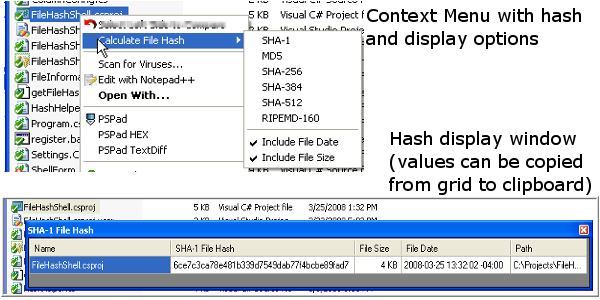Guy Burstein on MSDN - .NET 3.5 Enhancements Training Kit is available for Download
"The Developer and Platform Evangelism Group in Microsoft has created a new training kit for all the enhancements for the .Net Framework 3.5:
- ASP.NET MVC
- ASP.NET Dynamic Data
- ASP.NET AJAX History
- ASP.NET Silverlight controls
- ADO.NET Data Services
- ADO.NET Entity Framework
Download the training kit (34.9 MB)" [Post leached in full]
Currently this only contains the Hands On Lab's, but still good stuff to get you started with the given tech...
Here's a quick and dirty list of the primary stuff in the kit today;
NETFramework35Enhancements_TrainingKit\Labs\AdoNetDataServices
[Ex01-CreatingDataServices]
[Ex02-ConsumingDataServicesUsingAspNetAjax]
[Ex03-ServiceInterceptors]
NETFramework35Enhancements_TrainingKit\Labs\AdoNetEntityFramework
[Ex01-CreatingEntityDataModel]
NETFramework35Enhancements_TrainingKit\Labs\AspNetAjaxHistory
[Ex01-AjaxHistoryServerSide]
[Ex02-AjaxHistoryClientSide]
NETFramework35Enhancements_TrainingKit\Labs\AspNetDynamicData
[Ex01-CreatingDynamicDataApp]
[Ex02-CustomizingDynamicData]
NETFramework35Enhancements_TrainingKit\Labs\AspNetMvc
[Ex01-CreatingMvcApp]
[Ex02-MvcAndTdd]
[Ex03-MvcUsingIoC]
NETFramework35Enhancements_TrainingKit\Labs\AspNetSilverlightCtrl
[Ex01-UsingSilverlightMediaPlayerCtrl]
[Ex02-HostingSilverlightContent]
And from the post install readme;
ADO.NET Data Services
Introduction to ADO.NET Data Services
This lab highlights the creation of a data service using the Entity Framework as its data source, and shows how to consume the service using both the .NET client APIs and the ASP.NET AJAX APIs. Additionally, you will use Service Interceptors to add validation support and Service Operations to perform custom queries.
ASP.NET MVC
Developing ASP.NET MVC Applications
This lab shows the fundamentals of creating and ASP.NET MVC applications, their core concepts, how they work and how to use them. You will also learn what is needed and how to perform unit testing while creating the application and how to extend the ASP.NET framework to use an IoC container.
ASP.NET Dynamic Data
Introduction to ASP.NET Dynamic Data
In this lab, you will learn how to quickly create and customize a data-driven Web application without the need to write a great amount of code. The application created uses the ASP.NET Dynamic Data features to offers viewing, editing, filtering and sorting operations over the data model of the underlying database
ADO.NET Entity Framework
Introduction to ADO.NET Entity Framework
In this lab, you will learn how to create an Entity Data Model using the ADO.NET Entity Framework Tools and how to consume it using the Entity Framework APIs.
ASP.NET AJAX History
Introduction to ASP.NET AJAX History
One problem faced by a typical AJAX application is that the browser’s Back button does not move back one AJAX step, but moves back one entire document, which is unlikely to be what the user expects. In this lab, you will learn how to use the ASP.NET AJAX History features to insert history points using server controls or client-side code, so that the user may click the browser’s Back and Forward buttons to move between AJAX states.
ASP.NET Silverlight Controls
Introduction to ASP.NET Silverlight Controls
In this lab, you will learn how to use the ASP.NET controls for Silverlight to add rich media capabilities to your Web application. From one side, you will learn about the ASP.NET MediaPlayer control which lets you integrate audio and video into a Web site. On the other side, you will learn about the ASP.NET Silverlight generic control to integrate XAML into your Web site.




